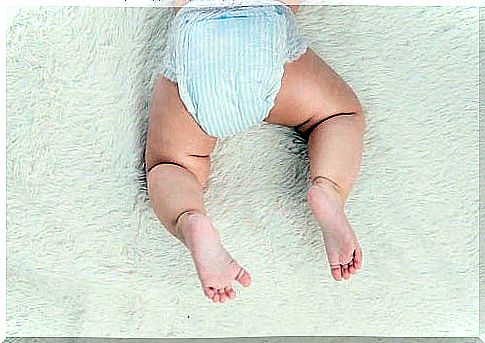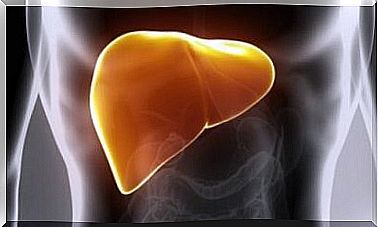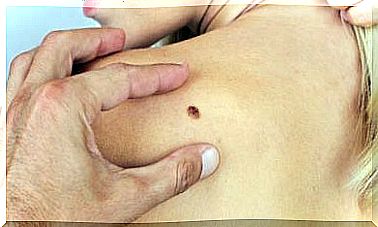Types And Treatments For Diaper Irritation

Diaper irritation is the most common skin disorder in infants. There are different types of diaper rash. It is usually a mild condition that requires minimal intervention. In most cases, it appears on the buttocks and genital area. However, it can also appear on the lower abdomen and upper thighs due to contact with irritants. What treatments for diaper irritation are there?
According to information provided by Pediatric Dermatology , this condition is the result of friction, overhydration and changes in the pH of the skin, among others. In addition, it is more common in the first year of life of the baby.
Symptoms of diaper irritation
Diaper irritation is an inflammatory reaction of the skin that occurs in the diaper area. Babies have thinner skin, and it produces fewer secretions. This makes them more susceptible to infections or irritations. Even so, the most important factor in this condition is covering the skin with a diaper.
The symptoms depend on the severity and duration of the dermatitis. According to information compiled by the Spanish Society of Ambulatory Medicine and Primary Care, some of the clinical manifestations of diaper rash are as follows:

Diaper irritation is the result of a combination of multiple factors. These include high humidity, prolonged contact with urine or feces, and other irritants such as detergents.
The second most common cause of diaper rash is infection (especially fungal infection caused by Candida albicans) . Similarly, other fungal infections may be associated with diaper rash, such as:
Types of diaper irritation
Contact irritant dermatitis is the most common type of diaper rash. Its appearance is related to skin contact with feces and urine that accumulates in the diaper. However, the folds in the groin area are healthy, unchanged because they have less contact with irritants.
To prevent this pathology, studies conducted by AEPED recommend keeping the area clean and dry at all times. In addition, you should change your baby’s diaper repeatedly throughout the day.
Is it possible to prevent diaper rash?

Diaper irritation treatments
Do not forget that, whatever the type of infection in the diaper area, the pathology requires diagnosis and treatment, ie it involves a visit to the pediatrician or dermatologist. Once the doctor determines the type of rash that affects the child and its distribution, he will determine the cause and treatment options.
In case of irritating contact dermatitis, you should practice proper hygiene and leave the baby without diapers for a few minutes after washing. Apply a special preparation on the intimate area before completing the diaper change.
If you are dealing with a fungal infection, then you will need to apply a local ointment with imidazole.
Note: The use of corticosteroid creams in the diaper area is completely contraindicated.
When to see a doctor and seek treatment for diaper rash?
If diaper rash does not go away after applying the above measures, you should consult a doctor so that he can prescribe the right medicine for you. Moreover, in case of suppuration, wounds, fever or any other clinical manifestation of a complication, go immediately with the little one to the doctor.
In most cases, these types of dermatological problems are alleviated through basic care, such as avoiding the use of irritants and ensuring optimal hygiene. Even so, it is best to tell your pediatrician about any symptoms.









